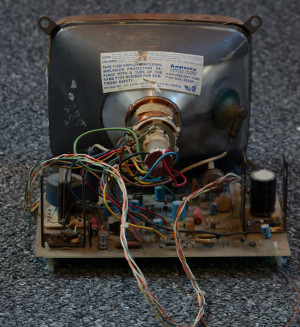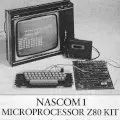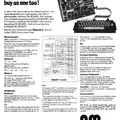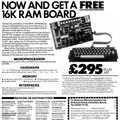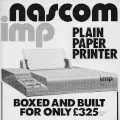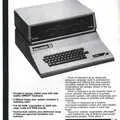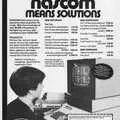
Nascom/Lucas Advert - June 1978
From Electronics Today
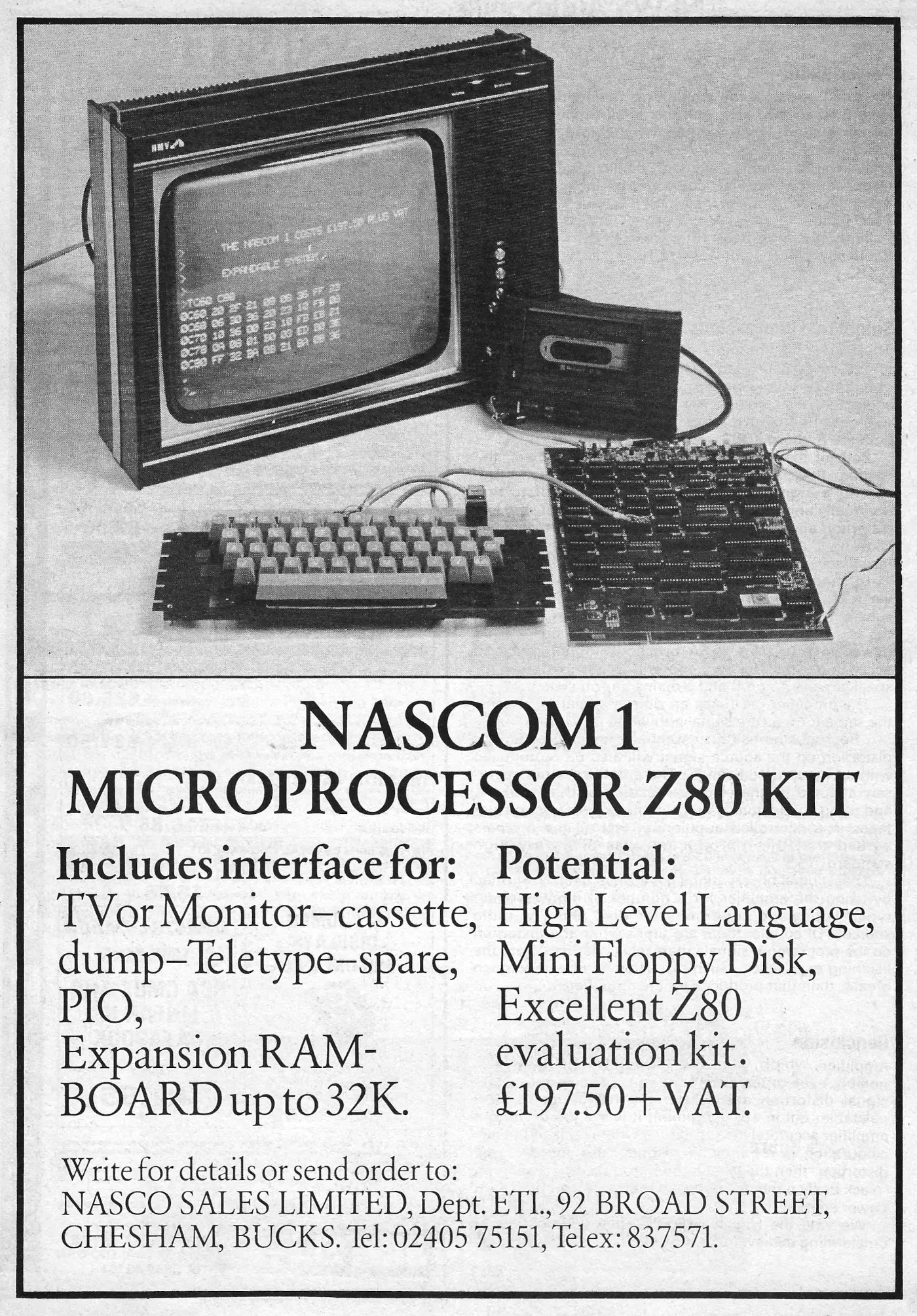
Nascom 1 Microprocessor Z80 kit
Nascom, the computer company which was eventually acquired by car-parts maker Lucas was, for a while, the UK's biggest supplier of computer kits.
It was established by Lynx Electronics - the hobbyist subsidiary of North American Semiconductor (NAS), which was known as Nasco in the UK.
NAS UK's chairman, John A. Marshall, was frequently in the US and spent time visiting amateur clubs on the west coast and so was able to experience first-hand the extent to which computer clubs and microcomputing were flourishing.
Seeing how much hobbyists in the US were spending on their computers, when "all you had for $2000 was a PCB with a processor, a serial I/O device and if you were lucky 1K of RAM", left quite an impression on Marshall.
In an interview with Scorpio News in 1989, he said of one of his return trips from the States in the autumn of 1976 that:
"On my flight home it occured to me that there might be a market in the UK for something similar, albeit at a much more modest price. At the time one could purchase an SLR camera for about £200 and this seemed to be a reasonable target resale price to aim for, since it was obvious that the male members of the population in this country were spending this sort of cash on their hobbies[1]".
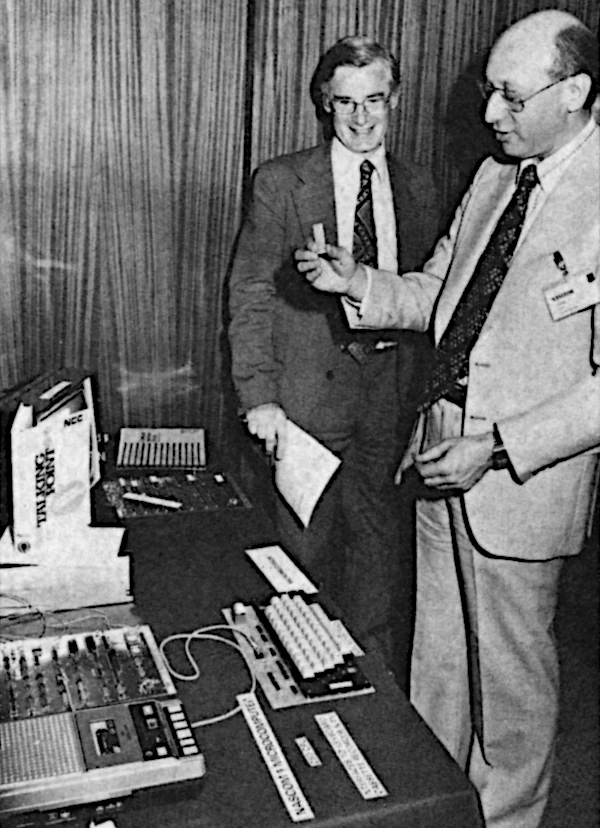
Gerald Kaufman, MP, holds the Z80 processor from a Nascom 1 at the National Computing Centre on the 28th July 1978. From Personal Computer World, November 1978Back in the UK though there was a feeling that the hobbyist had been "left out in the cold", and addressing this was the reason that the Nascom 1 was developed - with the aim to "produce an advanced-technology kit and put it within the UK mass-purchasing budget".
It was also hoped that with the right hardware, set at the right price that the British amateur was ready to buy, there would be sufficient users to warrant starting an officially-supported Nascom users' club.
Kerr Borland, Nascom's head of marketing, suggested in the very first edition of Personal Computer World in February 1978 that:
"As well as being ideal for the amateur it would solve many educational problems by creating a low-cost microcomputer. This would open up computer clubs in colleges all over Britain and the Continent".
The project, which had started in the summer of 1977, contracted out the design of the Nascom to Shelton Instruments, specialists in microprocessor-based control eqipment.
Chris Shelton chose to base the micro around Zilog's Z80 - in this case a version second-sourced by Mostek - as it was considered as a "third generation" CPU, was easy to learn, had a lot of software available and was rapidly becoming a popular CPU in the wider market.
The basic micro shipped with just 2K of RAM, in the form of eight 256-bit static RAM chips - and 1K of that was needed to hold the character map for video output - but it could support up to 32K.
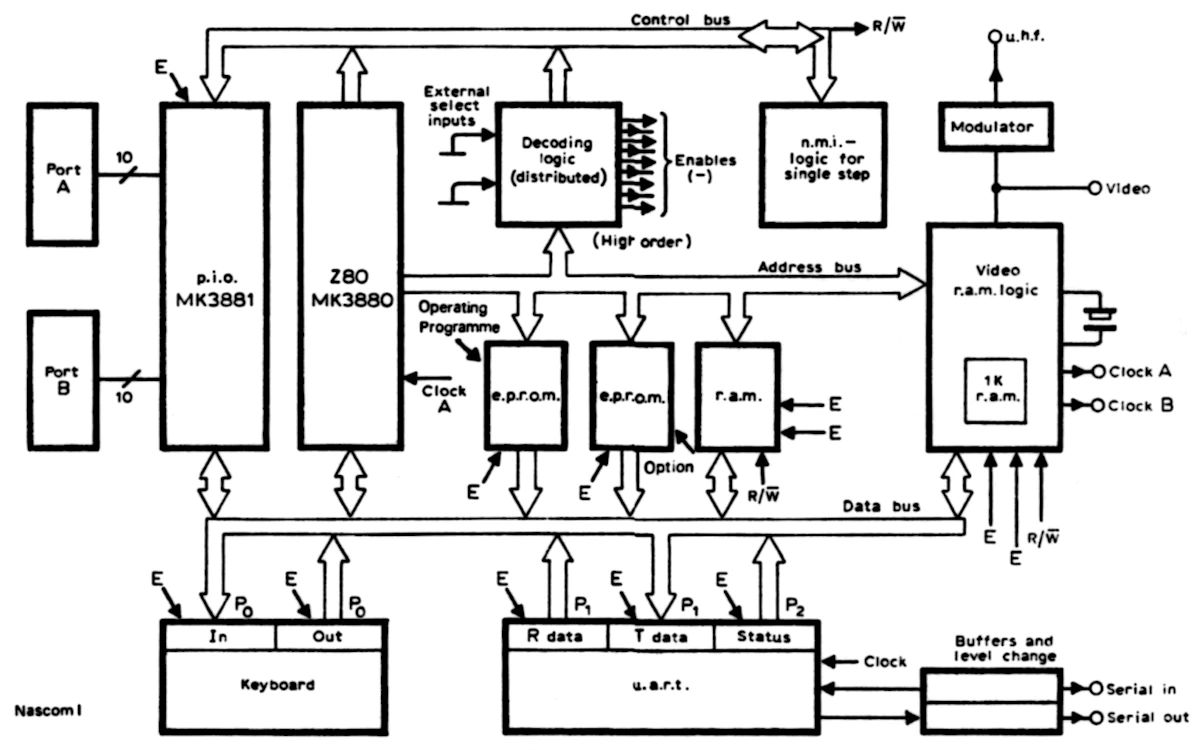
A schematic of the Nascom 1, from the first edition of Personal Computer World, February 1978
Whilst prototypes had been shown at the Home Microcomputer Symposium, held in the Wembley Conference Centre on the 26th November 1977[2] - some four months after the project started - the finished Nascom was officially launched in February 1978, with initial signs being that the project as "a complete success". However it was still not a given that the microcomputer would do well, with Borland suggesting:
"for all the enthusiams that Lynx people have, this is still entirely in the hands of the UK hobbyist. By March 1978 hobbyists will have kits spread throughout the UK and could by the end of 1978 number in thousands[3]".
That predicition turned out to be on the low side as by the summer of 1978 Nascom was claiming to have already shifted nearly 10,000 units, and at the end of 1979 it was even beating Sinclair's MK-14 and Acorn's System 1[4].
An Amperex 9" TV tube from a Commodore PET 3008The Nascom 1 was considered fairly unusual for a kit in that it provided both a keyboard and a video interface, at a time when most kits used LED displays and had only hexadecimal keypads or even switches as an interface.
Stick the Nascom 1 on a television and it was pretty much a complete computer, albeit one without a case.
Although the first wave of modern personal micros had been launched the year before, kit computers were still popular as they were a lot cheaper.
Besides, the built-in monitor of the £540 (£4,200) Commodore PET - the first of the new machines to be announced and shown in 1977 - was really only a glorified television as it used 9" Sanyo, Sony or Amperex TV tubes.
In another departure from many of its contemporaries, the Nascom didn't use the almost-industry-standard S-100 bus, as popularised by the Altair 8800 and IMSAI 8080, but instead went with its own 77-pin Nasbus.
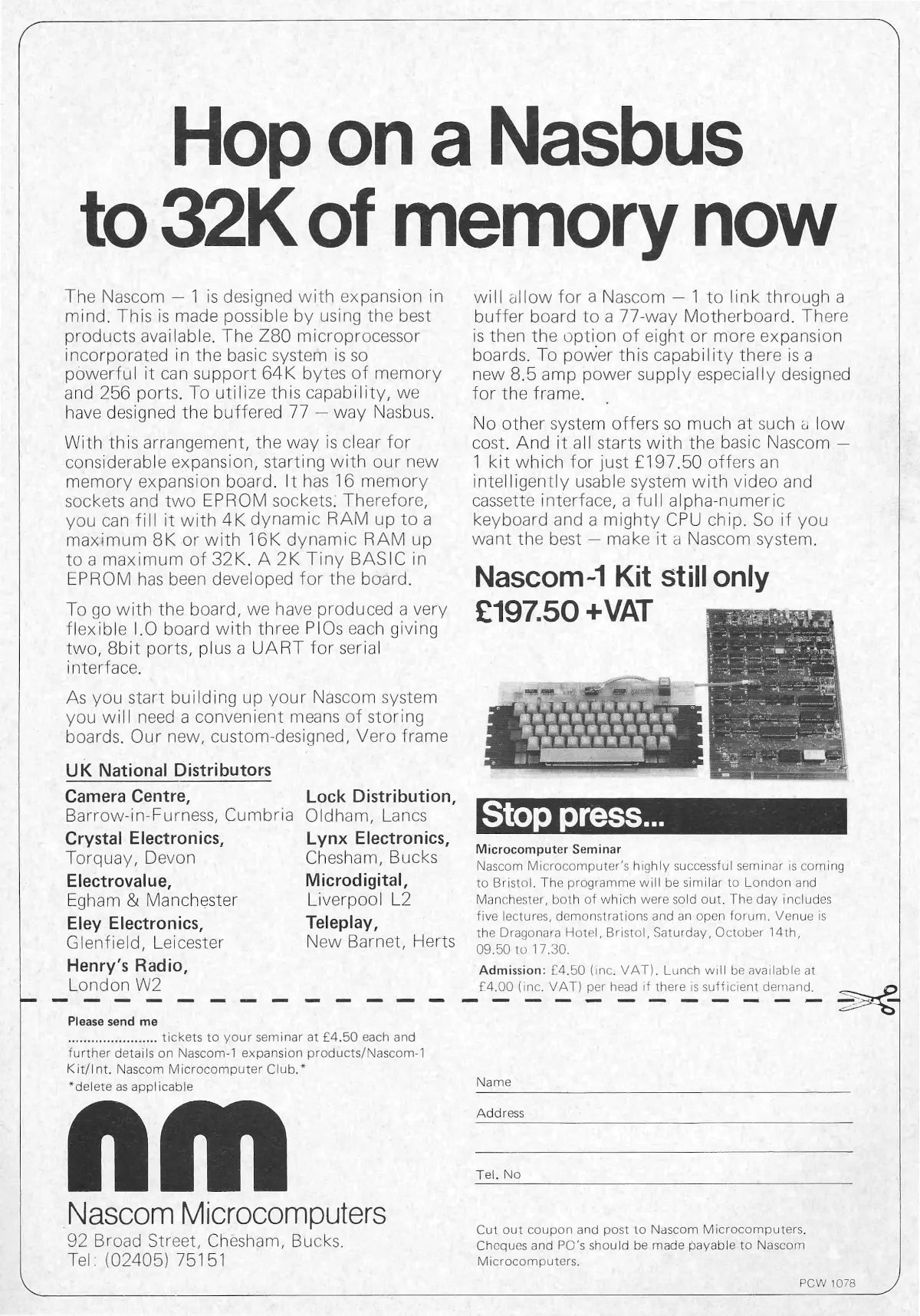
An advert for Nascom's new Nasbus 32K memory card and expansion frame, Vero. From Personal Computer World, October 1978
As well as a 32K Nasbus memory board - comprising 16 empty memory sockets and a 2K Tiny BASIC - Nascom was also offering its own expansion "frame" to host its cards. Called Vero, it could support "eight or more expansion boards".
When released in 1978, the Nascom 1, with monochrome video output, retailed for £213 (about £1,650 in 2025 money), which was just over the £200 sweet-spot the company had been aiming for.
However, Nascom was promising PAL colour output for both the Nascom 1 (and the later Nascom 2) by the begining of 1980.
Kerr Borland stated that the ultimate aim was to produce a kit with "most of the features that set the Apple II apart" for around £550 (£3,950 in 2025 money).
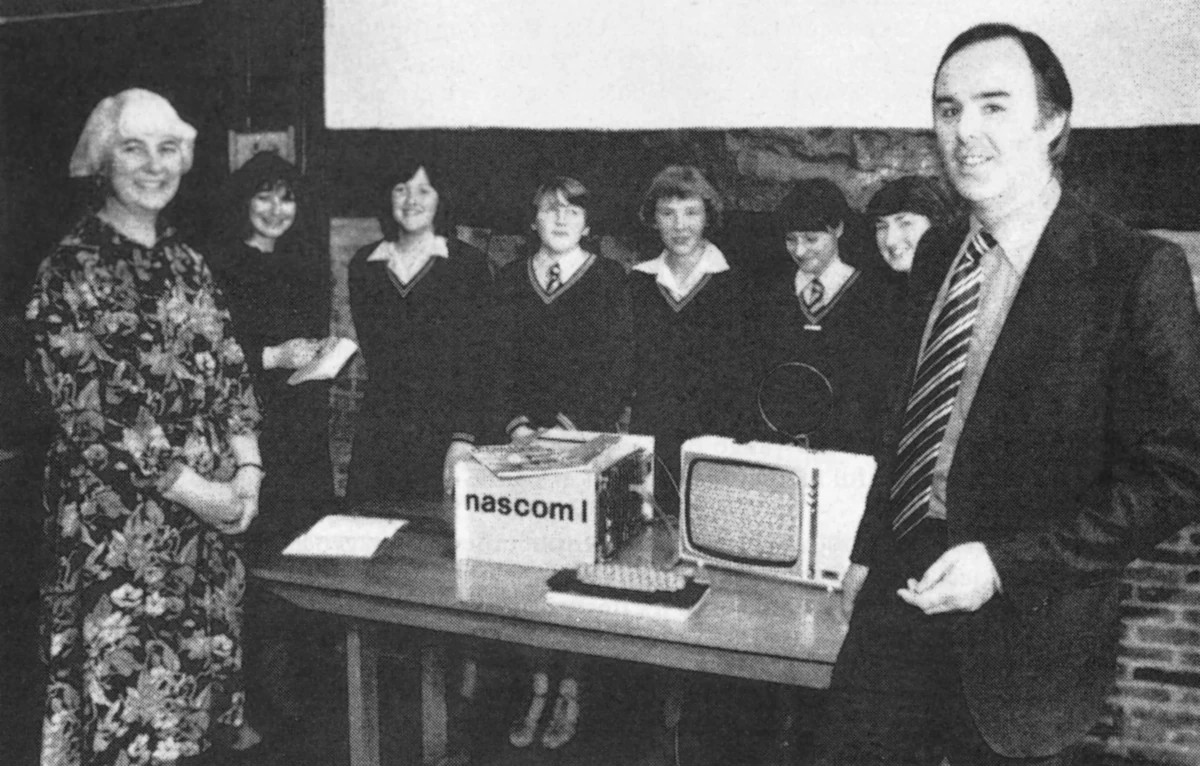
Kerr Borland of Nascom presents Practical Computing's 1978 Christmas competition prize - a Nascom 1 - to Stratford-upon-Avon Grammar School, from Practical Computing, August 1979
It wasn't all plain sailing though, as there were many "touch and go" delays caused by higher-than-expected sales at a time of tight company finances.
During 1979 the company had been finding it hard to raise money to fund expansion, so caused some excitement in the industry when it became the recipients of some new UK corporate and government finance, including a £500,000 (around £3,592,700 in 2025 terms) investment from Eagle Star subsidiary Grovewood Securities[5].
Unfortunately for Nascom, and in the words of John Marshall, the company fell into the "classic trap" of not asking for enough cash in its funding round, and when the company went back to ask for more at the beginning of 1980, Grovewood refused. Marshall said of this that:
"I felt at the time that this was a bad decision on Grovewood's part and nothing that has happened subsequently has made me change my mind. It was also untypical of the far-sighted policies usually followed by John Danny, the chairman of Grovewood. It was only a matter of months before the inevitable occured, during which time I tried to drastically cut overheads in order to save the company. I also became embroiled in a particularly bloody boardroom battle which resulted in the dismissal of all of the directors of the company. Every avenue of re-finance was explored, but without success, and on 27th May I was forced to ask Grovewood to appoint a receiver, thus achieving the somewhat dubious claim of being the first microcomputer company to seek protection from its creditors by this means[6]".
There was also a threatened lawsuit between Nascom and software company Mine of Information (MoI) to contend with.
MoI had planned to develop software for the Nascom, but supply delays together with an unlucky decision to pick the 8K model, "which never quite got debugged" according to Personal Computer World, meant that the company had to abandon its plans[7].
Luckily for Nascom, apart from some sabre-rattling, the lawsuit seemed to fizzle out[8].
Nascom continued in receivership for the next two years, despite a couple of failed buyout attempts - one by John Margetts, a member of the Nascom Microcomputer Club, and another by Manas Heghoyan, owner of a Watford-based PCB company. It was eventually acquired by car-parts maker Lucas's computing division, Lucas Logic in 1983.
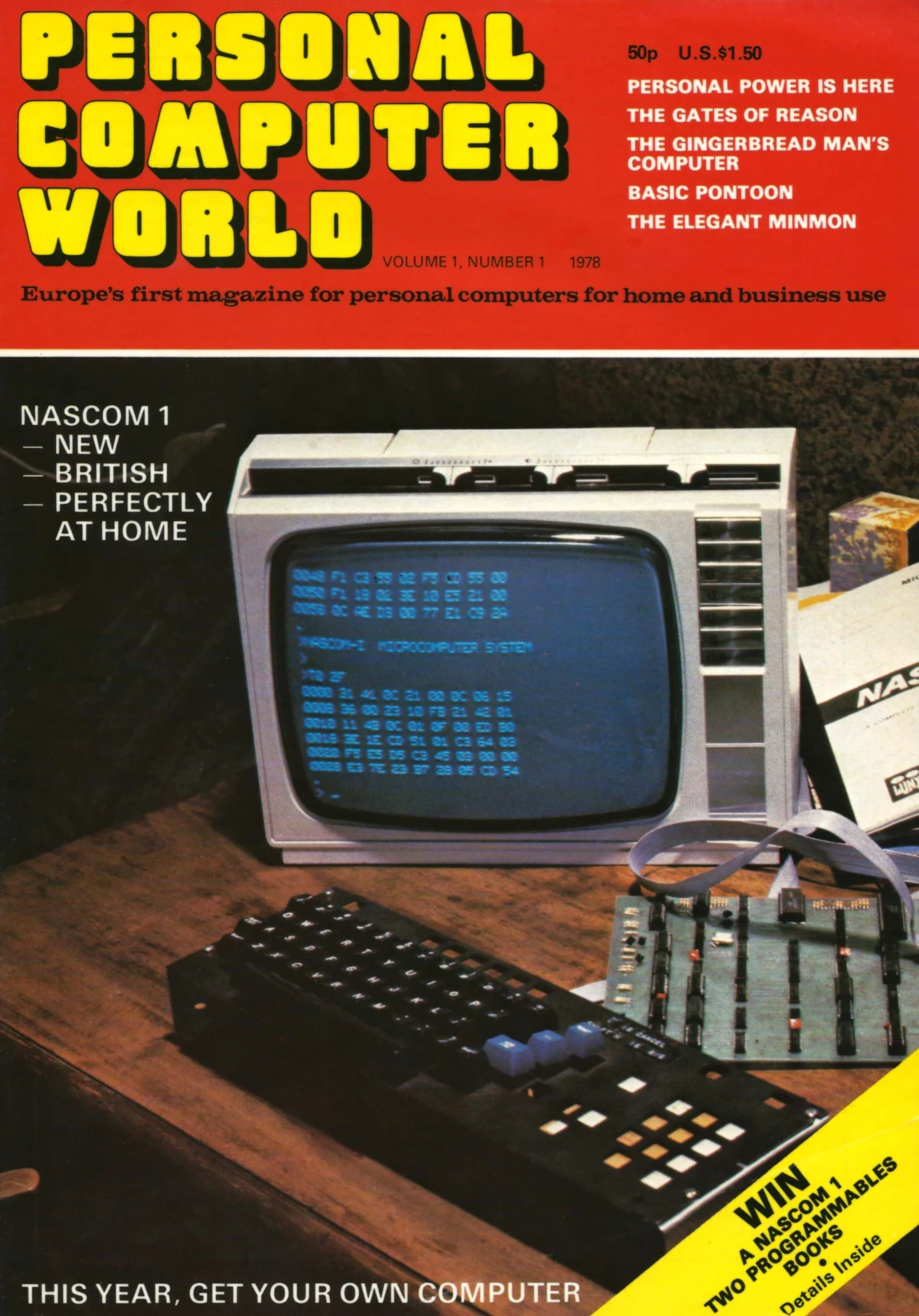
The first edition of Personal Computer World, with the Nascom 1 starring on the cover. February 1978
The Dawn of Personal Computer World
The Nascom 1 also left an indelible mark on the computer magazine industry as it was said to have partly inspired Angelo Zgorolec - a Croatian running a newsagent's business in London - to launch his own computer magazine: Personal Computer World.

Angelo Zgorolec, founder of Personal Computer World, pictured in that magazine's April 1993 edition, which celebrated PCW's 15th anniversary
Zgorolec had arrived in the UK in the late 1960s after leaving Croatia in what was then Yugoslavia, where he had been a journalist.
He then set up a small newsagency and distribution business, distributing titles such as Scientific America, Byte - The Small Systems Journal, and the "underground publication" Oz.
In 1977, the first ever computer shop in the UK opened, near to the Troubadour Café in Earl's Court where Zgorolec and friends would drink coffee.
This, plus his interest in gadgets and new technology, led to Zgorolec thinking about starting some sort of magazine, although the initial ideas weren't about computers:
"At first I was thinking about something new and fun, perhaps 'Solar World'. Then I read an article in the Wall Street Journal which predicted an enormous rise in the importance of personal computers, and I started to think about that"
In order to first gauge potential demand, and helped by the appearance of a £64 flight (£570 in 2025) to the US thanks to Freddie Laker, Zgorolec flew over to New York to visit the Personal Computer Expo, sponsored by US computer magazine Byte and held in the Coliseum between the 28th and 30th of October 1977[9].
As soon as he got there he immediately realised that the two hour queues to get in were all he needed to know about the popularity of the new industry.
Upon returning to the UK, and armed with £2,000 (£18,000 now) of his own money, Zgorolec set up a distribution deal and then persuaded his friend Meyer Solomon to become the new magazine's editor, with the first issue - in February 1978 - being neatly timed to coincide with the launch of the Nascom 1, which was also the first edition's cover star[10].
The success of the Nascom launch at Wembley Conference Centre, where Zgorolec was approached by over 300 enthusiastic attendees - some of whom offered to write for the new magazine on the spot - as well as a mention in a Sunday Times special on personal computing, helped Personal Computer World to sell out its first print run of 30,000 copies.
The second edition was published in May 1978, with the magazine going monthly from its third edition in July[11].
Although popular, the magazine struggled financially at first, with Zgorolec conceding that the advertising "was not working as well as it should have been".
By the end of 1979, the magazine was on the cusp of being sold to a building trade publisher, until Felix Dennis - publisher of Oz - stepped in and invested in the business, taking on 30% of the rights to the magazine[12].
In 1982, Personal Computer World was sold to magazine group VNU, where it continued via various changes in style and editor until 2009, when competition with websites like Anandtech and Tom's Hardware, as well as magazine competition from titles like Computer Shopper - plus perhaps the boredom factor of constant benchtests of generic almost-identical IBM PC clones - meant the end of road.
--
The Register has an excellent in-depth article on Dr. Chris Shelton, the designer of the Nascom 1.
Date created: 01 July 2012
Last updated: 10 December 2025
Hint: use left and right cursor keys to navigate between adverts.
Sources
Text and otherwise-uncredited photos © nosher.net 2025. Dollar/GBP conversions, where used, assume $1.50 to £1. "Now" prices are calculated dynamically using average RPI per year.
